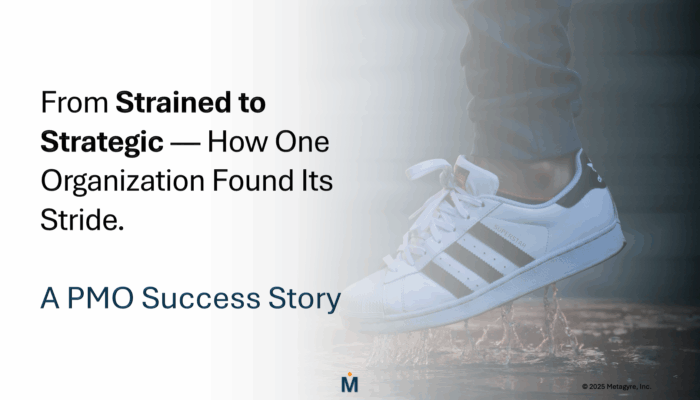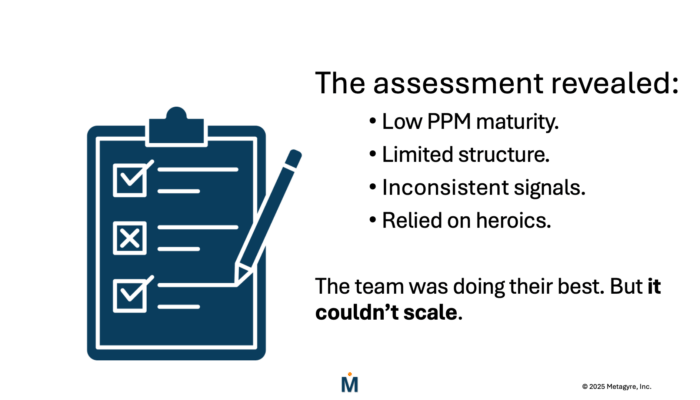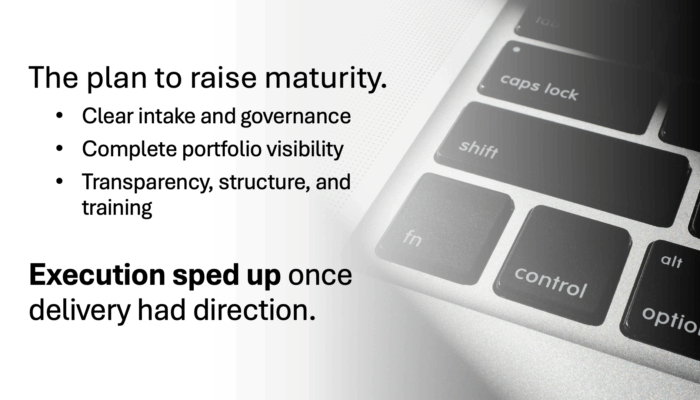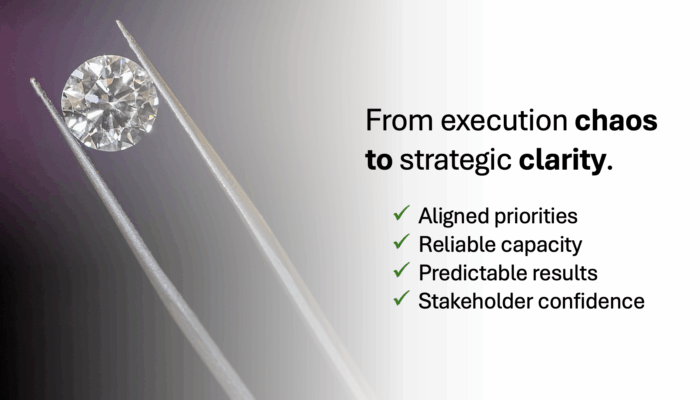A global sports brand was growing fast.
New stores. New tech. More projects than ever across North, Central, and South America.
The PMO was in the middle of all of it—supporting construction buildouts, retail upgrades, and IT rollouts. But delivery was struggling to keep up. Too much depended on who happened to be managing what. Leaders had no real visibility into where things stood—or where things were heading.
The project list kept growing. So did the stress.
They knew things weren’t great—that’s just how it is… Right?.
A quick self-assessment made it clear:
PMO maturity was stuck at Basic.
A few metrics looked okay, but not enough to support the pace the business was moving at.
The team wasn’t the problem.
The problem was they were trying to grow without a delivery system that could scale.
That’s when they sent for Metagyre.
No big reset. We built on what was already there.
First, we worked with their leadership team to understand what was working and what wasn’t.
The pain points were familiar:
- No portfolio-level control
- No predictable capacity
- Spotty oversight
- Everyone using different tools and templates
What they needed wasn’t more effort.
They needed structure. Rhythm. Clarity.
Together, we built a roadmap—starting with a pilot region to prove it out.
When the structure changed, delivery did too.
We didn’t just drop in a dashboard and call it transformation.
We gave them intake discipline. Governance that stuck. Tools that helped—not hindered. Training and coaching that met teams where they were.
Most importantly, we made risk and progress visible—before it turned into surprise.
One region was all it took to prove the model worked.
What started local and became the global standard.
The Americas rollout showed what was possible:
- Priorities got clearer
- Capacity became reliable
- Results stopped bouncing around
- And trust in the PMO came back
Everyone—from execs to engineers—started speaking the same delivery language.
That model became the blueprint for the rest of the business.
No big reorg. No massive headcount. Just the right system.
They didn’t fix delivery by throwing people at the problem.
They put the right structure in place—and let it do its job.
Now, the PMO delivers with consistency.
Leaders don’t chase status updates.
Teams focus on execution, not reporting.
And the business can move forward with confidence.
What’s next for you?
If you’re not sure where your PMO stands, start with the same first step:
👉 Get a structured PMO assessment
Want the full story to share with your team?
📄 Download the PDF case study










